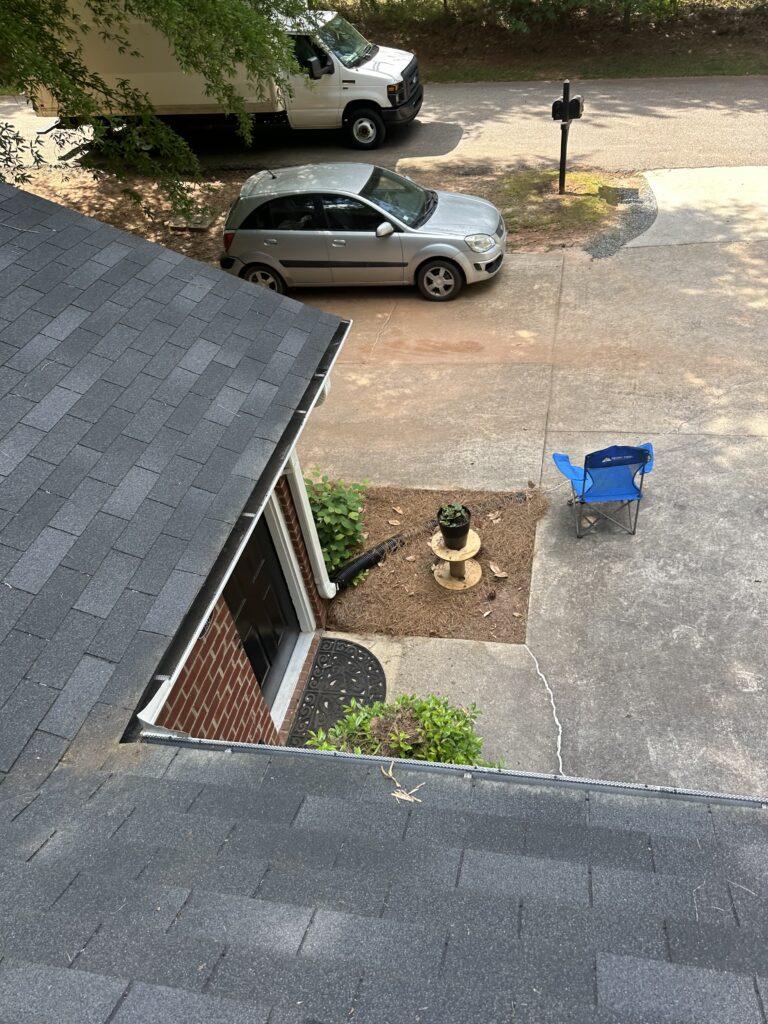
Key Takeaways
- Gutters protect your home by directing rainwater away from the foundation, roof, and landscaping—preventing costly water damage.
- DIY gutter replacement is a practical way to save money, boost curb appeal, and build valuable home maintenance skills.
- Plan and prepare carefully—measure accurately, gather the right tools, and follow local building codes before starting.
- Choose the best material for your needs and budget—aluminum for versatility, vinyl for affordability, or copper/steel for longevity and style.
- Install gutters correctly—maintain a proper slope, secure with brackets, seal joints, and test drainage to ensure smooth water flow.
- Avoid common mistakes like uneven slopes, weak supports, or unsealed seams that lead to leaks and sagging.
- Maintain regularly—clean debris, inspect for wear, and consider gutter guards to extend lifespan and reduce upkeep.
- Enhance aesthetics with custom colors, copper finishes, or decorative accessories like rain chains and splash blocks.
- Add efficiency upgrades such as rainwater collection systems or heat cables for cold climates.
- Enjoy the rewards—DIY gutter replacement saves money, improves your home’s look, and strengthens your long-term maintenance know-how.
Rainy days can become a costly affair if your gutters are not up to par. Whether you’re a homeowner keen on keeping property maintenance under control, a DIY enthusiast ready for the next challenge, or a property manager looking for efficient solutions, knowing how to replace your gutters can save you both time and money. This guide will walk you through every step of the process, providing insights and practical tips on DIY gutter replacement. Read on to learn about the essential tools you’ll need, how to ensure a perfect fit, and expert installation techniques.
Why Gutters Matter More Than You Think
Gutters play a crucial role in property maintenance by directing rainwater away from your home. When gutters fail, water can damage your foundation, landscaping, and even your roof. A well-functioning gutter system is essential for safeguarding the structural integrity of any building. By understanding the importance of gutter replacement, you can prevent costly repairs and maintain the value of your property.
For DIY enthusiasts and property managers alike, tackling gutter installation offers a unique opportunity to enhance home improvement skills. Not only does it allow you to improve your property’s appearance, but it also equips you with knowledge that can be applied to other areas of home maintenance. Mastering DIY gutter replacement ensures you stay prepared to deal with any challenges that come your way.
When it comes to home improvement tips, replacing gutters is often overlooked. However, as more people recognize the benefits of doing it themselves, the demand for DIY guides continues to grow. With this blog, you’ll gain valuable insights into the world of gutter installation and maintenance, empowering you to make informed decisions about your property.
Preparing for Your Gutter Replacement Project
Before embarking on a DIY gutter replacement project, it’s crucial to plan and gather all necessary materials and tools. Start by measuring your existing gutters to determine the amount of material you’ll need. This includes taking into account the size and length of downspouts, elbows, and brackets. Once you have these measurements, purchase high-quality gutters that match your home’s needs.
The right tools make a significant difference in the success of your project. Essential tools for gutter installation include a ladder, drill, tape measure, hacksaw, and pliers. Investing in a comfortable pair of safety goggles and work gloves will protect you throughout the process. By organizing your tools beforehand, you can ensure a smooth DIY experience.
Finally, familiarize yourself with local building codes and regulations related to gutter replacement. Some areas may have specific requirements for materials or installation techniques. By adhering to these guidelines, you’ll guarantee that your project complies with all necessary standards, saving you potential headaches down the line.
Removing Old Gutters Without a Hitch
Removing old gutters is the first step in your DIY gutter replacement project. Begin by carefully inspecting the existing system for any visible damage, such as sagging, rust, or leaks. Documenting these issues will help you identify potential problem areas and ensure a thorough replacement.
Once you’ve assessed the condition, it’s time to take down the old gutters. Position your ladder securely on a stable surface and work methodically, detaching sections one at a time. Use a drill to remove screws and brackets, and keep these parts organized in case they can be reused. Remember to enlist a helper if possible, as longer gutter sections may be cumbersome to handle alone.
After removing the gutters, inspect the fascia and soffit for damage. These areas can often be affected by water exposure and may require repairs before installing new gutters. Addressing these issues now will extend the longevity of your new gutter system and prevent future complications.
Choosing the Right Gutter Material
Selecting the appropriate material for your new gutters is a critical decision that impacts both performance and appearance. Common gutter materials include aluminum, vinyl, steel, and copper, each offering distinct advantages and drawbacks. Consider factors such as durability, cost, and aesthetics when making your choice.
Aluminum gutters are popular due to their lightweight nature and resistance to rust. They are easy to work with and come in various colors, allowing you to match them seamlessly with your home’s exterior. For those seeking a more budget-friendly option, vinyl gutters are an excellent choice. However, they may not hold up as well in extreme weather conditions.
Steel and copper gutters are known for their durability, making them an ideal choice for homeowners prioritizing longevity. Though more expensive than aluminum and vinyl, these materials provide a unique appearance that adds character to any property. Evaluating your priorities and budget will help you determine the best gutter material for your DIY project.
Installing Gutters Like a Pro
With your new gutters and tools in hand, it’s time to begin the installation. Start by positioning the gutters along the fascia, ensuring a slight slope towards the downspouts to facilitate proper water flow. A drop of approximately 1/4 inch for every 10 feet of gutter is recommended for optimal drainage.
Secure the gutters using brackets, attaching them at regular intervals to prevent sagging. Make sure each section is aligned correctly, and use a level to confirm the slope. Connect the various sections by overlapping them slightly and sealing the joints with an appropriate sealant to prevent leaks.
Once the gutters are in place, attach the downspouts, ensuring they direct water away from your home’s foundation. Use elbows and extensions as needed to achieve the desired configuration. Proper downspout installation is critical to prevent water from pooling near your property, which can lead to structural damage over time.
Ensuring a Perfect Gutter Fit
Achieving a perfect fit is essential for a successful gutter replacement project. Start by double-checking your measurements and cut the gutter sections accordingly using a hacksaw. Taking this extra step ensures that each piece fits snugly and functions as intended.
Pay close attention to corners and intersections, as these areas can be prone to leaks if not installed properly. Use mitered joints or special corner pieces to create a seamless connection between sections. This attention to detail will enhance the overall appearance and performance of your gutter system.
Finally, test your installation by running water through the gutters to check for leaks and ensure proper drainage. Address any issues immediately to avoid potential problems down the road. With patience and diligence, you can achieve a flawless gutter installation that enhances your home’s functionality and curb appeal.
Common Gutter Installation Mistakes to Avoid
Even the most seasoned DIY enthusiasts can make mistakes during a gutter replacement project. By being aware of common pitfalls, you can avoid unnecessary challenges and setbacks. One frequent error is failing to maintain the proper slope for water drainage. Ensuring the correct angle will prevent water from pooling and causing damage.
Another mistake is using inadequate support to secure gutters. Skimping on brackets or spacing them too far apart can lead to sagging and inefficiency. Install brackets at regular intervals to provide adequate support and maintain the gutter system’s integrity.
Lastly, neglecting to seal joints and connections can result in leaks that compromise your gutters’ performance. Use high-quality sealant to secure all seams and prevent water infiltration. By sidestepping these common mistakes, you’ll set yourself up for a successful DIY gutter installation.
Maintaining Your New Gutters for Long-Lasting Performance
Proper maintenance is key to extending the life of your new gutter system. Regular cleaning is essential, especially after storms or during the fall when leaves are plentiful. Use a sturdy ladder and gloves to remove debris, and flush the gutters with water to ensure optimal drainage.
Inspect your gutters periodically for damage or signs of wear, such as rust or sagging. Addressing minor issues promptly will prevent them from escalating into more significant problems. Additionally, checking for loose brackets or screws will help maintain the gutters’ stability and performance.
Consider investing in gutter guards to minimize debris buildup and reduce the frequency of cleaning. These protective covers can significantly extend the lifespan of your gutters, saving you time and effort in the long run. By prioritizing regular maintenance, you can enjoy the benefits of your DIY gutter replacement for years to come.
Enhancing Curb Appeal with Custom Gutter Options
Your gutter system doesn’t have to be purely functional; it can also enhance your home’s curb appeal. Customizing your gutters with unique design features or colors can make a striking visual impact while maintaining their essential function.
Consider choosing gutters in a color that complements your home’s exterior. Many materials, such as aluminum and steel, are available in a wide range of colors, allowing you to harmonize the system with your property’s overall aesthetic.
If you’re looking to make a bold statement, consider incorporating copper gutters. Their distinctive patina develops over time, adding a touch of elegance and character to any home. Custom gutter options offer an opportunity to personalize your property while ensuring optimal performance and protection.
Exploring Advanced Gutter Accessories for Added Efficiency
Incorporating advanced accessories into your gutter system can further enhance its efficiency and functionality. Gutter guards, for example, are an excellent addition that prevents debris from entering the gutters and reduces the frequency of cleaning.
Another useful accessory is a rainwater harvesting system. By attaching rain barrels to your downspouts, you can collect and store rainwater for use in your garden or landscaping, promoting sustainability and reducing water costs.
Heat cables are another innovative solution for preventing ice dams in colder climates. These cables run along the gutter and downspouts, melting ice and snow to maintain proper drainage. By exploring advanced accessories, you can maximize the performance of your gutter system and protect your property in various weather conditions.
Celebrating the Benefits of DIY Gutter Replacement
Completing a DIY gutter replacement project brings numerous benefits beyond the immediate satisfaction of a job well done. First and foremost, you’ll enjoy significant cost savings by handling the installation yourself. This financial advantage allows you to allocate resources to other home improvement projects.
Additionally, mastering the process of gutter installation enhances your skillset and builds confidence in tackling future property maintenance tasks. This newfound expertise is invaluable for homeowners, DIY enthusiasts, and property managers alike.
Finally, the knowledge gained from completing a DIY gutter replacement empowers you to make informed decisions about your property’s upkeep. With the right skills and tools, you can ensure your home’s longevity and continue enhancing its value for years to come.
Conclusion
Replacing your gutters is an opportunity to improve your home’s function and appearance while honing your DIY skills. By following this comprehensive guide, you’ll be equipped to tackle every aspect of gutter installation, from selecting materials to testing the final product. Remember, regular maintenance and thoughtful customization will ensure your new gutters stand the test of time. Keep these home improvement tips in mind, and you’ll be well on your way to mastering DIY gutter replacement. Happy installing!
Frequently Asked Questions
- Why should I replace my gutters myself?
DIY gutter replacement saves money, allows customization, and gives you hands-on control over quality and design. - What materials work best for gutters?
Aluminum is lightweight and rust-resistant; vinyl is budget-friendly; copper and steel offer premium durability and visual appeal. - How can I make sure my gutters drain correctly?
Ensure a slight slope of about ¼ inch for every 10 feet toward the downspout to maintain steady water flow. - What are the biggest DIY mistakes to avoid?
Skipping measurements, improper slope, insufficient bracket spacing, and forgetting to seal joints can all lead to leaks or sagging. - How often should I clean or inspect my gutters?
At least twice a year—typically in spring and fall—or more often if your home is surrounded by trees or heavy debris.



